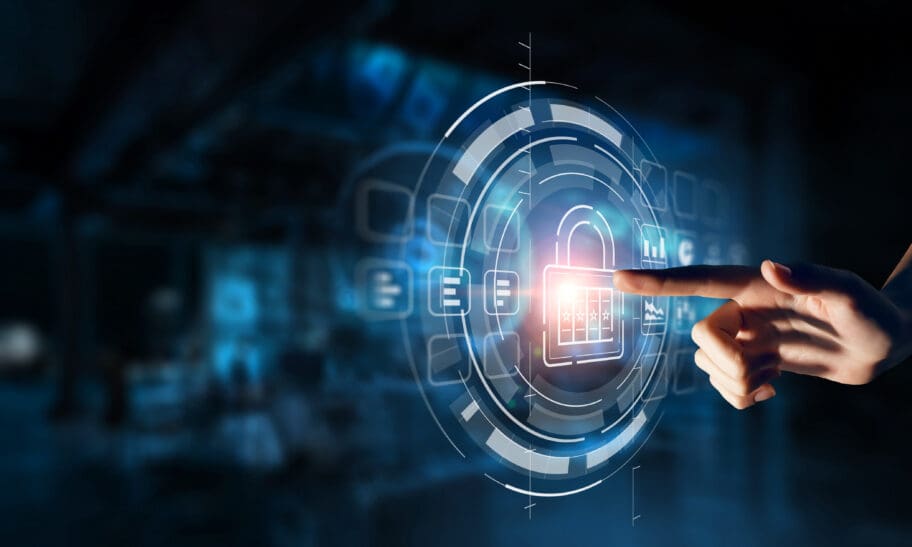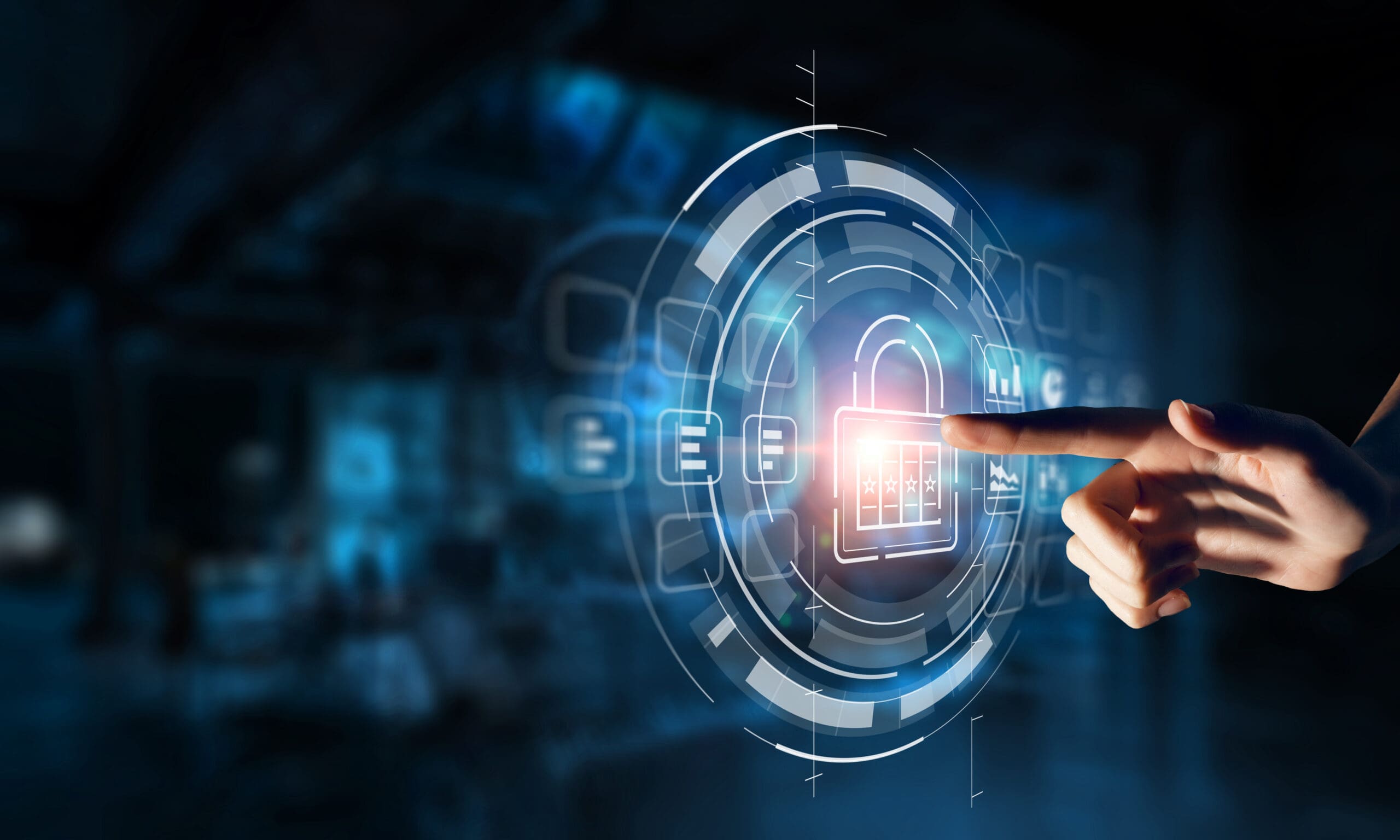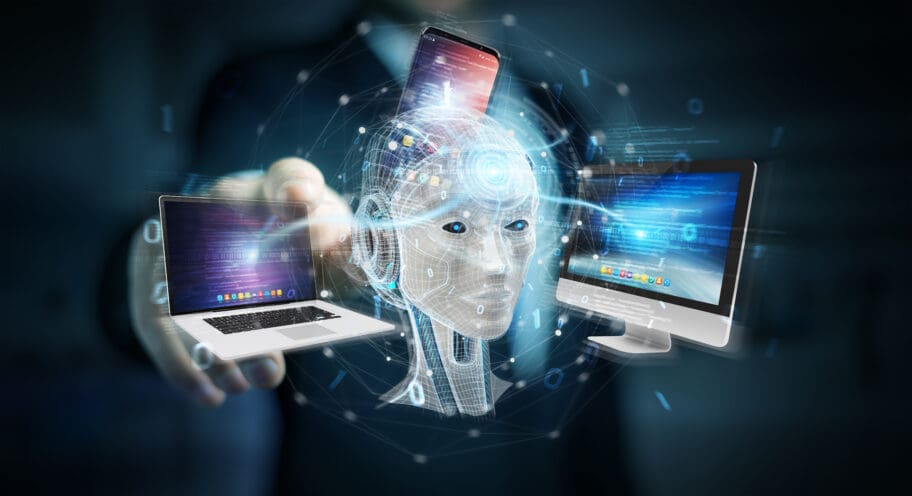"Deep learning, a subset of Artificial Intelligence, is the new electricity," said Andrew Ng, co-founder of Coursera and a pioneer in the computer vision platform field. This digital transformation can even outperform a human officer in certain tasks. The power of artificial intelligence has permeated every sector, including intelligence agencies and their security applications like video surveillance systems, particularly in person detection. With an escalating need for enhanced surveillance and access control, artificial intelligence integration in modern security systems of intelligence agencies is not just a luxury but a necessity. This necessity extends to vehicle detection and person detection systems.

The evolution of artificial intelligence in the security industry, particularly within intelligence agencies and their use of video surveillance systems, has been transformative, thanks to deep learning. It's not only about detecting intruders with security systems anymore; it's about using person detection, security cameras, and video surveillance to be proactive, predicting threats before they materialize. But with great power comes great responsibility - privacy concerns are on the rise as AI, specifically computer vision and behavioral analytics, becomes more prevalent in surveillance through cameras and security systems.
The global market growth of AI in business, especially in computer vision and video surveillance applications, particularly with security cameras, is compelling evidence that this technology isn't going anywhere soon. Discover how AI in security and surveillance systems is ensuring modern safety measures and reshaping the industry.
Applications of AI-Enabled Surveillance
Facial Recognition in Identity Verification
Ever had that moment when you're trying to remember someone's name but just can't? Computer vision applications can alert the human brain to assist. Computer vision applications can alert the human brain to assist. Indeed, surveillance systems are getting a serious upgrade with facial recognition technology, thanks to computer vision and AI video analytics. These advancements incorporate cameras for detailed capture and anomaly detection for enhanced security. Imagine this: a computer vision system using a camera not just for recording footage, but for AI vision-based anomaly detection that actually identifies individuals. Businesses and intelligence agencies are already utilizing computer vision and its applications, such as ai video analytics and anomaly detection, to verify identities and monitor activities.
One major application of computer vision in retail is the use of video systems to identify potential human shoplifters. It's like having a super-powered security guard with computer vision, an AI that never forgets a human face, enhancing applications through video analytics! Another example is at airports, where computer vision is used to speed up the check-in process by verifying passenger identities through video analysis of human features.
But it's not all sunshine and rainbows. There are serious concerns about privacy and misuse of computer vision and AI video analytics technology in human applications. However, as long as proper regulations are in place, the benefits of human video analysis using computer vision could outweigh the risks.
Predictive Analysis for Threat Detection
Imagine if computer vision could analyze video to predict a crime before it happens, using human behavior patterns? Sounds like something straight out of Minority Report, right? But with AI-enabled surveillance cameras utilizing computer vision and predictive analysis software, we're inching closer to that reality of human video monitoring.
Predictive analysis uses historical data and machine learning algorithms, like computer vision, to anticipate future events in video. In terms of security and surveillance, computer vision means detecting potential threats before they occur. For instance, computer vision analytics might pick up unusual behavior patterns or suspicious activities, which could indicate an impending crime or threat.
This application isn't just limited to preventing crimes either. Computer vision can also be used by businesses for risk management or even market forecasting!
Crime Prediction with Machine Learning
Now let's discuss another thrilling application: crime prediction using machine learning algorithms and computer vision. These aren't your average predictions though - think more along the lines of behavioral analytics combined with computer vision applications.
Machine learning algorithms, including computer vision, analyze vast amounts of data from various sources such as social media posts, news reports, and surveillance footage. They then use this vision to gather information and identify patterns or trends associated with criminal behavior.
For example, these vision-based models may detect areas with high incidences of certain types of crime at specific times or days - helping law enforcement agencies allocate resources more effectively with their vision.
Sentiment Analysis During Crowd Monitoring
Ever tried reading the mood of a crowd at a concert or sports event through your vision? Now imagine applying that vision for thousands or even millions of people! That's where the vision of natural language processing (NLP) comes into play in AI-enabled surveillance systems for sentiment analysis during crowd monitoring.
By analyzing speech patterns, body language cues, and other indicators from video footage or social media posts, NLP can gauge public sentiment on a large scale - whether it be excitement during a football match or unrest during protests. This vision of understanding emotions through analysis is revolutionary.
This kind of real-time feedback can help organizers manage events better while providing a valuable vision for businesses looking to understand their audience’s reactions better!
Unattended Baggage Identification through Object Detection
Lastly but certainly not leastly (is that even a word?), let’s chat about vision-based object detection techniques being used for unattended baggage identification in surveillance systems. You know how in movies there's always some shady character with a peculiar vision, leaving behind an ominous-looking bag? Well now there’s tech that can spot those bags faster than any human eye ever could!
Using advanced computer vision applications integrated into video surveillance systems; these tools can accurately identify objects left unattended – raising immediate alerts for security personnel.
Big Data's Role in Security Analysis
Real-Time Threat Detection
Let's dive right into it, shall we? Imagine this: You're a security professional. Your job is to keep tabs on threats and risks, right? But how do you do that when the scale of data you need to analyze is huge? That's where big data analytics steps in.
Big data analytics plays a crucial role in real-time threat detection. It sifts through massive amounts of information quickly and efficiently. It can detect anomalies and potential threats that humans might miss due to the sheer volume of data.
Remember those movies where the heroes catch the bad guys just as they're about to strike? Well, that’s not too far from reality with big data analytics! It can predict potential threats before they occur by analyzing patterns in historical data. Talk about being one step ahead!
Emergency Response Time Improvement
Next up, let's talk emergencies. When disaster strikes, every second counts. So how does big data help improve emergency response times?
By analyzing vast amounts of data from various sources (like social media posts or weather forecasts), big data tools can provide insights into potential emergencies faster than traditional methods.
Imagine an earthquake hits a city. Big data could analyze tweets from residents, seismic activity reports, and traffic patterns to pinpoint affected areas and direct emergency services there ASAP. No more guesswork - just swift action!
Hidden Patterns & Correlations Identification
Now let's switch gears a bit and talk about crime prevention. Ever heard of predictive policing? It’s not some sci-fi concept; it’s happening now thanks to big data.
Data mining techniques dig deep into vast datasets to identify hidden patterns and correlations related to criminal activities. Think of it like piecing together a jigsaw puzzle – each piece of information adds up until you see the whole picture.
For instance, by analyzing crime rates, locations, times, weather conditions (you name it!), law enforcement agencies can anticipate where crimes are likely to happen next and take proactive measures.
Simplifying Complex Security Information
Alrighty then! Let's move onto something less grim - visualizing complex security information using big data tools.
Have you ever tried reading raw database logs or network traffic reports? Not exactly easy on the eyes! But with visualization tools powered by big data algorithms, these complicated datasets can be transformed into understandable graphics.
Imagine getting all your security info neatly presented in charts or graphs rather than endless rows of text files! Easier analysis means quicker decisions – pretty neat huh?
Decision-Making Processes Influence
Last but definitely not least: decision-making processes within the security sector have been revolutionized thanks to big data insights.
By providing comprehensive analysis on a large scale of relevant factors – such as risk levels or resource allocation – decision-makers can make informed choices based on solid evidence instead of gut feelings or educated guesses.
Who knew that heaps upon heaps of seemingly unrelated information could be so powerful when analyzed correctly?
So there you have it folks; whether it’s catching criminals before they strike or responding swiftly during emergencies – we owe a lot to big-data-driven security analysis!
AI in Security and Surveillance: Advanced Video Detection Techniques
Heat Map Generation
Ever wondered how a swarm of bees knows where to go? They use heat maps! Now, imagine if your security system could do the same. By implementing heat map generation from video feeds, surveillance systems can visually represent areas with high activity or movement. This is like having an eagle-eye view of what's happening in real-time.
-
For instance, in a parking lot scenario, vehicle detection becomes more efficient as hotspots indicate frequent vehicle movement.
-
In retail spaces, heat maps can highlight popular sections attracting customers.
These benefits are not just fancy tech-talk but have real-world implications improving security and business intelligence.
Motion Tracking Algorithms
Next up on our tech toolbox are motion tracking algorithms. Think of them as the Sherlock Holmes of ai video analytics. They meticulously analyze video data and detect suspicious movements or activities.
-
These algorithms play a crucial role in identifying potential threats by monitoring unusual patterns in movement analysis.
-
Using machine learning technology, they learn from past footage and get better at detecting anomalies over time.
So whether it's a wide-angle camera catching a pickpocket in action or a compact one spotting an unattended bag at an airport, motion tracking algorithms ensure nothing slips through the cracks.
Anomaly Detection Methods
Anomalies - they're like those pesky little siblings who always try to break the rules. But guess what? We've got anomaly detection methods that act like strict parents keeping them in check!
-
With AI-powered video cameras using anomaly detection methods, anything out of ordinary gets flagged instantly.
-
Whether it's someone loitering around after hours or sudden crowd dispersal indicating potential danger – these methods keep an eye on everything ensuring safety and security.
This is deep learning put into action making surveillance systems smarter than ever before!
Color-Based Object Tracking Techniques
Did you know chameleons change color for communication and not camouflage? Similarly, color-based object tracking techniques communicate vital information about objects within video streams enhancing surveillance efficiency.
-
From identifying team colors during sports events to recognizing vehicle colors for traffic management - this technique has varied applications.
-
It even helps differentiate between similar looking objects based on color – think finding Nemo amongst his orange clownfish buddies!
So next time you spot something colorful on your screen remember there's some pretty advanced tech working behind it!
Depth Estimation Methods
Last but definitely not least we have depth estimation methods. If you thought 3D was only for movies and games then think again! In 3D surveillance systems these methods provide critical spatial information about objects within the camera's field of view.
-
Imagine being able to determine how far away an intruder is or accurately gauging the size of a crowd – all thanks to depth estimation.
-
It’s like having Superman’s X-ray vision minus the superpowers!
From enhanced object recognition to improved scene understanding - depth estimation takes video analytics from two dimensions into three adding another layer of sophistication to AI in Security and Surveillance.
AI in Security and Surveillance: AI for Road Safety and Traffic Measures

Intelligent Traffic Management Systems
Imagine a world where traffic flows smoothly without the need for human intervention. Sounds like a dream, right? Well, it's not too far from reality. AI technology is revolutionizing the way we manage traffic. Intelligent traffic management systems are leveraging AI to optimize traffic flow and reduce congestion.
These systems use real-time data and predictive analytics to adjust traffic signals, predict congestion, and provide alternate routes to drivers before they even hit the road. For instance, cities like Los Angeles and Pittsburgh have already implemented such systems leading to reduced travel times by up to 25%.
Moreover, these intelligent systems play a crucial role in law enforcement as well. They can detect violations such as speeding or running red lights, automatically triggering alerts or alarms for immediate attention by authorities. The result? Safer roads and more efficient law enforcement.
Autonomous Vehicles & ADAS
On another front, autonomous vehicles equipped with advanced driver-assistance systems (ADAS) are making waves in road safety measures:
-
Adaptive cruise control adjusts speed based on surrounding vehicles.
-
Lane departure warning systems alert drivers when their vehicle starts drifting out of its lane.
-
Forward collision warning systems send alerts if there's a risk of collision with the vehicle ahead.
In essence, these vehicles are designed to anticipate potential incidents and react accordingly - all thanks to AI vision technologies which enable them to 'see' their surroundings accurately.
Pedestrian Safety & Smart Cities
Pedestrians form an integral part of any city's transportation ecosystem. As such, pedestrian safety is paramount in smart cities framework that leverages image recognition technologies powered by AI.
For instance, some smart cities use AI vision technology at intersections or other high-risk areas within public places like airports or markets:
-
Detect pedestrians who might be stepping into traffic
-
Alert approaching vehicles about pedestrians in blind spots
-
Triggering flashing lights or alarms as warnings
Such applications not only safeguard pedestrians but also contribute towards achieving zero-accident goals set by many cities worldwide.
Predictive Maintenance & Accident Prevention
Vehicle breakdowns aren't just inconvenient; they're dangerous too! That's where predictive maintenance comes into play – it uses machine learning algorithms applied on vehicle diagnostics data:
-
Analyze patterns in past breakdowns
-
Predict future failures
-
Schedule maintenance proactively
The result? Fewer unexpected breakdowns leading to fewer accidents caused by mechanical failure.
Automated Parking Solutions
Last but not least, let's talk about parking - often considered one of the most stressful parts of driving! But fret not - automated parking solutions using computer vision technology are here:
-
Identify available parking spaces
-
Navigate your vehicle into the spot safely
-
Even pay for parking without you having to dig around for change!
So next time you're circling around looking for a spot at the mall during Christmas shopping season – remember that help is on its way!
Anomaly Detection in AI Vision
The Outlier's Role
Anomaly detection, let's think of it as the Sherlock Holmes of the security world. It's a crucial part of AI in security and surveillance, especially. Imagine a computer vision platform that can spot an intruder trying to sneak into a secure facility at night or detect an unattended bag in a crowded airport.
Sounds cool, right? But this isn't just about being cool; it's about safety and protection. When anomaly detection is integrated into a system, local anomalies that could potentially pose threats are identified swiftly, allowing for immediate action.
What makes this possible? Well, we owe it all to outlier detection methods. These are the algorithms that help identify patterns that deviate from what we call 'normal behavior'. They're like the eagle-eyed guards who never miss anything out of place.
Unsupervised Learning: The Unsung Hero
Let's dive deeper now. How does anomaly detection work its magic? Enter unsupervised machine learning models. These bad boys are behind most anomaly identification tasks you see around today.
Imagine having a group of objects and you need to sort them based on their similarities without any prior knowledge - sounds tough right? That’s exactly what unsupervised machine learning models do with data clusters! They sort through massive amounts of data looking for patterns or groups (clusters).
Now imagine adding another layer – autoencoders based approaches. Autoencoders are DNN models (Deep Neural Networks) used for reducing data dimensions while preserving its structure – like packing your suitcase so well, nothing gets wrinkled!
These two combined bring us benefits beyond measure: they make our systems smarter and more efficient at identifying anomalies.
Real-time Alerts: Your New Best Friend
Ever wish you could have been alerted sooner about something important? That’s exactly what real-time alert mechanisms triggered upon anomaly detections offer us – improved response times drastically.
Think about it this way; there’s an unusual movement detected on your property at 2 AM. Would you rather know instantly or find out hours later when you wake up?
The quicker we know about these anomalies, the faster we can react - whether it's calling security forces or taking other necessary actions.
Continuous Learning: The Game Changer
In the world of AI vision and anomaly detection, continuous model training process is key! Think about how humans learn over time by constantly gaining new experiences and adapting accordingly – well machines can do the same!
By repeatedly training our models with fresh data sets over time, they become better at detecting anomalies because they've seen more examples and variations of normal behavior versus anomalous behavior.
This adaptive capability gives our systems an edge by making them more robust against evolving threats and changing environments.
False Alarms: The Necessary Evil
Alright folks! Here comes the tricky part – false alarms! Nobody likes them but unfortunately they’re part and parcel of deploying anomaly detection models.
False alerts can be frustrating but remember that no system is perfect straight off the bat - there will always be room for improvement! By continuously refining our systems based on these false positives, we end up with smarter algorithms capable of distinguishing between true threats and harmless anomalies.
Biometric Recognition and Person Identification
Fingerprint Scanning Technologies
Ain't it cool how our fingerprints are unique, like a secret code that only we possess? Well, guess what, the tech world has caught on to this too. Fingerprint scanning technologies are making waves across various sectors including law enforcement and corporate settings.
Think about it for a second. A human officer can't possibly remember every single person's face or details, right? But these recognition algorithms don't forget. They're like an elephant with an iron-clad memory. It's no wonder that the adoption rate of fingerprint scanning technologies is skyrocketing.
But wait there’s more! The benefits associated with this technology are as numerous as the stars in the night sky:
-
It provides a high level of security.
-
It eliminates the need for physical keys or remembering passwords.
-
It offers quick and accurate results.
-
The system is difficult to cheat because fingerprints are unique to each person.
Iris Recognition Systems
Now let's talk about iris recognition systems. Sounds futuristic, doesn’t it? These systems use recognition algorithms to analyze the random patterns that naturally occur in our irises. This is some next-level stuff!
The best part? Its non-contact nature makes it super convenient and user-friendly - no poking or prodding required here folks!
And you know what else? Iris recognition systems have shown such a high level of accuracy that they're practically infallible. That’s why they’re increasingly relied upon in high-security areas.
Voice Biometrics
What if I told you your voice could be your password? No more forgetting those pesky alphanumeric codes! Voice biometrics is gaining traction as a secondary authentication method across digital platforms.
Imagine being able to unlock your phone or make secure transactions just by speaking into your device – pretty neat huh?
But hold up, there's more:
-
Voice biometrics can recognize not just WHAT you say but HOW you say it
-
This technology can even pick up on subtle changes in human behavior
-
It can adapt and learn from these changes over time
Gait Recognition Technologies
Ever noticed how everyone has their own unique way of walking? Well, gait recognition technologies have picked up on this too! These systems use image processing techniques to identify people based on their walk - even at a distance.
This might sound like something out of a sci-fi movie but trust me, it’s happening right now!
Here’s where things get even cooler:
-
Gait recognition doesn’t require any special equipment – regular CCTV cameras will do just fine
-
Unlike facial recognition technology which requires clear images of faces, gait analysis works perfectly fine even if the person is far away or not directly facing the camera
-
This technology can work seamlessly alongside other biometric methods for enhanced security measures
Privacy Issues & Potential Misuse Scenarios
Alright folks, let’s get real for a minute here - all this advanced tech does come with its share of challenges especially concerning privacy issues & potential misuse scenarios tied up with biometric databases.
Just think about it:
-
What happens when someone gets unauthorized access to these databases?
-
Imagine having your most personal information – your face, voice or even walk – misused by someone else!
Wrapping it Up: AI's Role in Security and Surveillance
So, there you have it. From spotting a needle in a haystack of data to keeping an eagle eye on the roads, AI is shaking up security and surveillance big time. It's not just about fancy video detection or biometric recognition anymore. We're talking serious anomaly detection that can spot the odd one out faster than you can say "AI".
What's next? Well, that’s up to you! Are you ready to ride the wave of AI innovation? Get involved now and make your mark in this rapidly evolving field. Remember, fortune favors the bold!
FAQs
What are some applications of AI in security surveillance?
AI can be used for various purposes such as advanced video detection techniques, biometric recognition, person identification, road safety measures and anomaly detection.
How does Big Data play a role in security analysis?
Big Data aids in analyzing vast amounts of information quickly and accurately which helps identify patterns or anomalies that could indicate potential threats or breaches.
Can AI help improve road safety measures?
Absolutely! By monitoring traffic patterns and driver behavior, AI systems can predict potential accidents and take preventive actions to ensure road safety.
What is anomaly detection in AI vision?
Anomaly detection refers to the ability of an AI system to detect unusual events or objects within a given set of data.
How does biometric recognition work with AI?
Biometric recognition uses unique physical characteristics like fingerprints or facial features for identification. When combined with AI, it can process this data more accurately and faster than traditional methods.

Article by
Titus Mulquiney
Hi, I'm Titus, an AI fanatic, automation expert, application designer and founder of Octavius AI. My mission is to help people like you automate your business to save costs and supercharge business growth!

